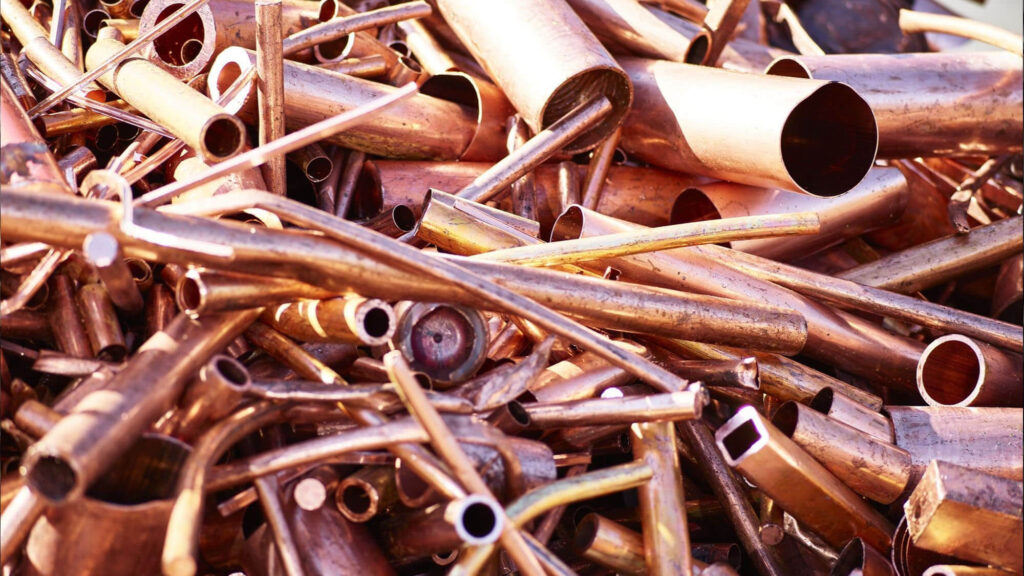Copper Nickel 70/30, also known as Cupro-Nickel 70/30, is a widely used alloy composed of 70% copper and 30% nickel, often with trace amounts of iron and manganese to enhance its properties. This alloy is renowned for its excellent corrosion resistance, especially in marine environments, making it highly sought after in various industrial applications. When this material reaches the end of its lifecycle in products or equipment, it becomes scrap, which holds significant value due to its recyclability and utility.
Composition and Characteristics
The Copper Nickel 70/30 alloy has specific characteristics that make it valuable in many applications:
- High corrosion resistance: Particularly resistant to saltwater corrosion, this alloy is frequently used in seawater systems and desalination plants.
- Thermal stability: It retains mechanical strength and stability at high temperatures, making it suitable for heat exchangers and other thermal equipment.
- Malleability: The alloy is ductile and can be easily fabricated, which makes it versatile for forming into various shapes and sizes.
These properties make Copper Nickel 70/30 scrap especially desirable in industries such as shipbuilding, power generation, chemical processing, and offshore oil and gas platforms.
Sources of Copper Nickel 70/30 Scrap
Copper Nickel 70/30 scrap is typically derived from end-of-life equipment or products used in the following industries:
- Marine industry: Scrap is commonly collected from decommissioned ships, naval vessels, and other marine structures due to the alloy’s superior resistance to seawater.
- Heat exchangers and condensers: Old and worn-out heat exchangers and condensers that utilize the alloy in their tubing are a key source of scrap material.
- Desalination plants: Components in desalination plants, such as evaporators and piping, are often made from Copper Nickel 70/30, contributing to scrap when the systems are upgraded or replaced.
- Offshore oil rigs: Components of oil and gas platforms that operate in corrosive marine environments are constructed from this alloy, becoming scrap at the end of their service life.
Recycling Process
Recycling Copper Nickel 70/30 scrap involves several key steps:
- Collection: The scrap is collected from decommissioned equipment, construction waste, or obsolete products.
- Sorting and Separation: After collection, the scrap must be sorted by type. Since Copper Nickel 70/30 often contains iron and other trace elements, proper separation ensures the highest quality material for reuse.
- Shredding and Melting: The scrap is then shredded into smaller pieces to facilitate the melting process. The alloy is melted down in specialized furnaces.
- Refining: Impurities are removed, and the metal is refined to the desired composition.
- Recasting: The refined metal is cast into ingots, sheets, or other forms for resale to manufacturers who will reuse it in new products.
Market Value and Demand
Copper Nickel 70/30 scrap is highly valued in the market due to its unique properties and the high demand for corrosion-resistant materials in critical industries. Its market value fluctuates based on factors such as:
- Copper and nickel prices: The global market prices for copper and nickel heavily influence the value of this scrap alloy.
- Supply and demand: High demand for marine and industrial components that use Copper Nickel 70/30, combined with limited availability of primary sources, makes recycled scrap a valuable commodity.
- Environmental factors: Increased emphasis on sustainable and eco-friendly manufacturing has driven demand for recycled metals, making Copper Nickel 70/30 scrap a vital resource in the circular economy.
Environmental and Economic Benefits of Recycling
Recycling Copper Nickel 70/30 scrap offers significant environmental and economic benefits:
- Energy savings: Recycling scrap metal requires less energy than producing new metal from raw ore, reducing the overall carbon footprint of production.
- Resource conservation: By recycling existing materials, the demand for mining new copper and nickel is reduced, preserving natural resources.
- Cost efficiency: Manufacturers benefit from lower costs associated with recycled metal, which is often cheaper than newly mined and refined material.
- Waste reduction: Recycling scrap metal helps divert waste from landfills and reduces the environmental impact of metal disposal.
